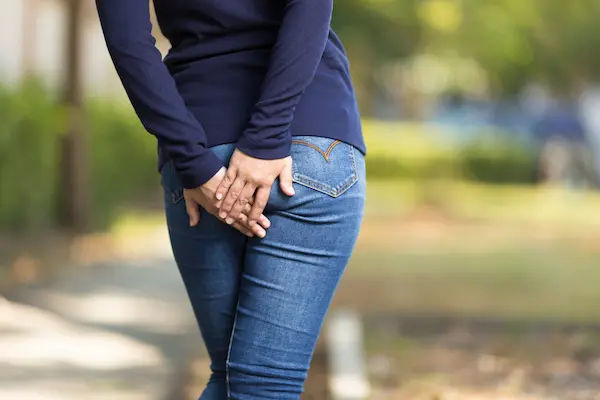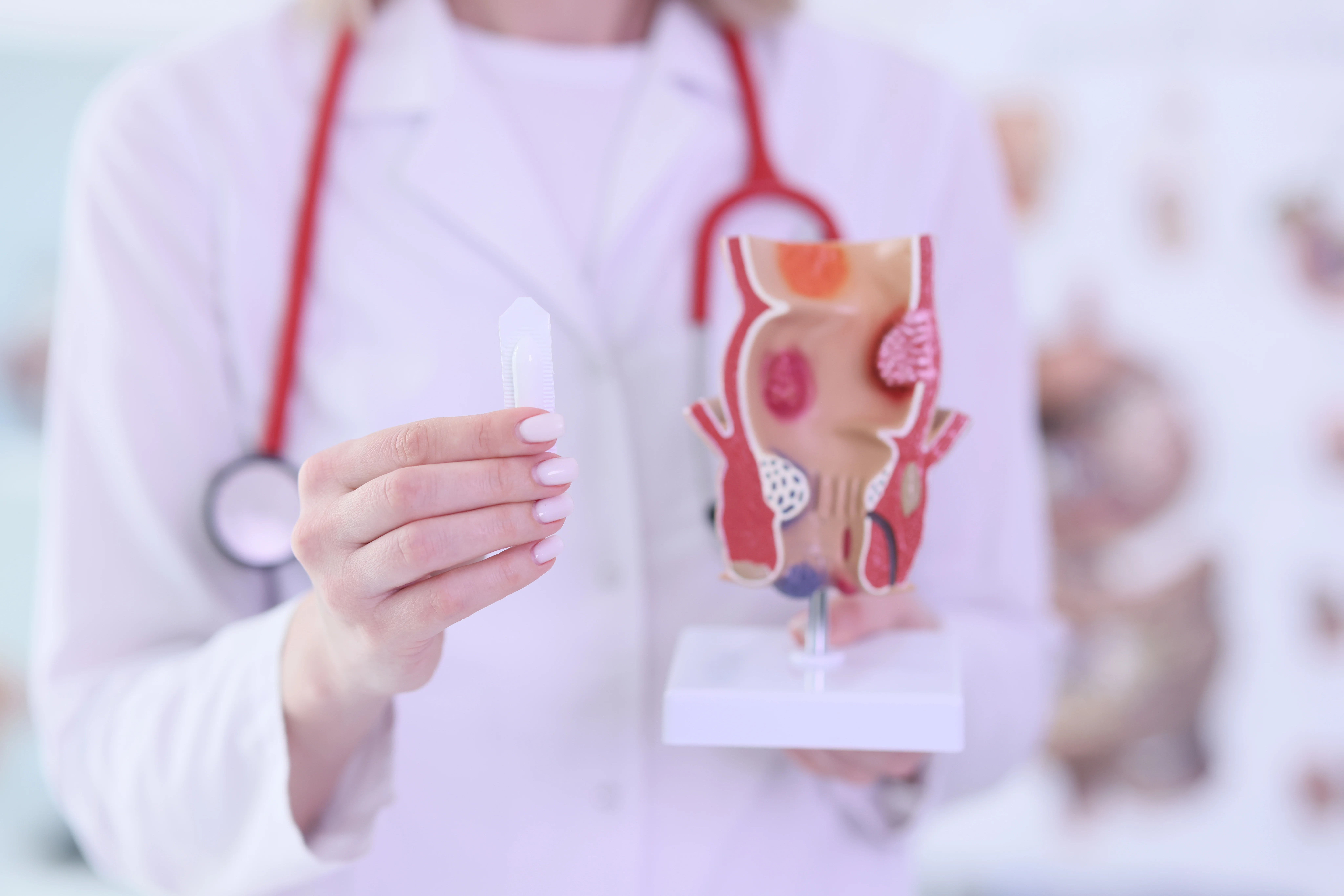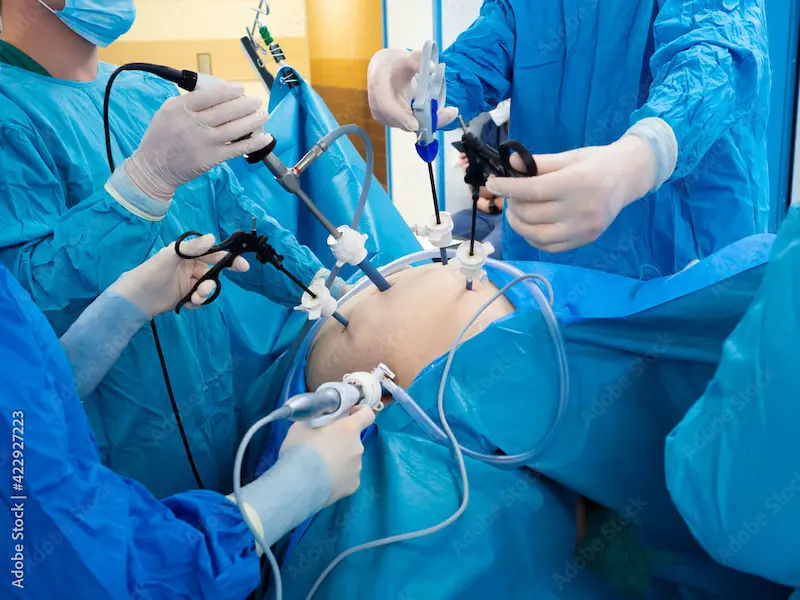Guide to Common Perianal Problems: From Haemorrhoids to Fissures
Explore common perianal problems like haemorrhoids and fissures, their symptoms, causes, and treatment options for better relief.

Written by Dr. Dhankecha Mayank Dineshbhai
Reviewed by Dr. Mohammed Kamran MBBS, FIDM
Last updated on 30th Sep, 2025

Introduction
Dealing with discomfort, pain, or itching around the anus can be a source of significant stress and embarrassment. Yet, common perianal problems are incredibly widespread, affecting millions of people at some point in their lives. The good news is that most of these conditions are highly treatable, especially when addressed early. This guide is designed to demystify these sensitive issues, providing clear, compassionate information about what might be causing your discomfort, what you can do about it, and when it’s time to seek professional help. We’ll walk through the most frequent culprits, haemorrhoids, fissures, abscesses, and persistent itching explaining their symptoms, causes, and both home-based and medical solutions. Our goal is to empower you with knowledge, reduce the stigma, and help you find the relief you deserve.
Understanding the Perianal Area: Your Body's Final Frontier
The perianal area refers to the region of skin and tissue immediately surrounding the anal opening. It’s a complex network of sensitive skin, blood vessels, glands, and muscles that work together to maintain continence. Because of its location and function, this area is subject to unique pressures and is prone to specific issues related to bowel habits, hygiene, and anatomy. Understanding that these common perianal problems are a result of physiological factors, not personal failure, is the first step toward addressing them effectively and without shame.
Haemorrhoids: The Most Common Culprit
When people think of anal discomfort, haemorrhoids are often the first thing that comes to mind and for good reason. They are among the most prevalent perianal conditions.
What Are Haemorrhoids, Exactly?
Contrary to popular belief, haemorrhoids are not abnormal growths. Everyone has haemorrhoidal tissue, cushiony clusters of veins within the anal canal that help with stool control. Problems arise when these veins become swollen and inflamed, similar to varicose veins in the legs. This can happen due to increased pressure, often from straining during bowel movements, chronic constipation or diarrhoea, pregnancy, obesity, or even sitting for prolonged periods.
Symptoms: Itching, Bleeding, and Discomfort
Haemorrhoids are classified as internal (inside the rectum) or external (under the skin around the anus). Their symptoms vary:
- Internal Haemorrhoids: May cause painless bright red bleeding you see on toilet paper or in the bowl. If they prolapse (protrude outside the anus), they can cause itching and discomfort.
- External Haemorrhoids: Can cause significant pain, swelling, and itching. A thrombosed haemorrhoid, where a blood clot forms, is especially painful and appears as a firm, bluish lump.
Effective Treatment and Soothing Relief
Most haemorrhoids respond well to conservative treatment:
- Increase Fibre and Water: Softening stools is the number one way to reduce straining.
- Sitz Baths: Soaking the area in warm water for 10-15 minutes several times a day can reduce swelling and soothe irritation.
- Over-the-Counter Creams: Products containing hydrocortisone or witch hazel can provide temporary relief from itching and pain.
For persistent or severe cases, medical procedures like rubber band ligation or haemorrhoidectomy may be necessary. If you experience persistent bleeding or severe pain, consult a doctor online with Apollo24|7 for further evaluation.
Consult a Colorectal Surgeon for the best advice
Anal Fissures: More Than Just a Paper Cut
An anal fissure is a small tear or cut in the thin, moist tissue (mucosa) that lines the anus. While the description sounds simple, the pain can be excruciating.
The Agonising Cycle of an Anal Fissure
The primary cause is often trauma from passing a hard or large stool. However, the real problem is a cycle of pain and spasm. The tear causes sharp pain during and after a bowel movement. This pain triggers a spasm in the internal anal sphincter muscle. The spasm pulls the edges of the fissure apart, preventing healing, and reduces blood flow to the area, making the next bowel movement even more painful. This is the anal fissure cycle.
Healing a Fissure: Breaking the Cycle
Treatment focuses on breaking this cycle:
- Stool Softeners: Keeping stools soft and bulky is critical to allow the tear to heal.
- Warm Sitz Baths: These relax the sphincter muscle, increasing blood flow and promoting healing.
- Topical Nitroglycerin or Nifedipine: These prescription ointments help relax the sphincter muscle.
- In chronic cases, a minor procedure may be needed.
Perianal Abscess and Fistula: When Infection Sets In
This is a more serious perianal condition that requires medical attention.
From Abscess to Fistula: A Troublesome Pathway
A perianal abscess is a collection of pus caused by a bacterial infection in one of the small glands inside the anus. It appears as a painful, red, swollen, hot lump near the anus. If an abscess is not treated, it may eventually burst on its own, providing temporary relief. However, in about 50% of cases, a tunnel called a fistula can form between the infected gland and the skin, allowing the infection to recur.
Recognising and Treating an Abscess
Symptoms of an abscess are hard to ignore: throbbing, constant pain that worsens with sitting or coughing, swelling, redness, and sometimes fever. Treatment always involves a minor surgical procedure to drain the pus. This provides immediate pain relief and is essential to prevent the infection from spreading. A fistula, if it develops, requires a separate surgical procedure to close the abnormal tunnel.
Pruritus Ani: The Maddening Itch
Pruritus ani is the medical term for intense, persistent itching around the anus. It can be incredibly disruptive to daily life.
Common Causes of Anal Itching
The causes are varied and often relate to moisture and irritation:
- Incomplete Cleaning: Traces of stool can irritate the skin.
- Over-Cleaning: Harsh soaps, scented wipes, and vigorous scrubbing can strip away natural oils, causing dryness and irritation.
- Diet: Coffee, tea, soda, chocolate, spicy foods, and dairy can irritate the anus as stool passes.
Medical Conditions: Haemorrhoids, fissures, yeast infections, or skin conditions like eczema.
How to Stop the Scratch Cycle
The key is to identify and eliminate the irritant. Practice gentle hygiene with water and a soft cloth, avoid scented products, and wear loose, breathable cotton underwear. A doctor can help rule out infections or other underlying perianal problems. If symptoms persist beyond two weeks, consult a doctor online with Apollo24|7 to identify the root cause.
Less Common But Important Conditions
While some conditions are rare, they can still have a significant impact on health.
Pilonidal Disease
This occurs when hair follicles in the cleft of the buttocks (near the tailbone) become infected, forming a cyst or abscess. It's more common in young men and can be quite painful. Treatment involves drainage and sometimes surgical removal.
Perianal Warts (HPV)
These are caused by the human papillomavirus and appear as small, flesh-coloured bumps around the anus. They are a sexually transmitted infection and require medical treatment to remove them and reduce the risk of transmission.
Diagnosis: How Doctors Identify the Problem
Diagnosing common perianal problems is usually straightforward. A doctor will take a history and perform a visual examination of the area. For internal issues, a digital rectal exam (inserting a gloved, lubricated finger) or a procedure called an anoscopy (using a short, lighted scope) may be performed. These quick in-office procedures are essential for an accurate diagnosis.
Prevention is Key: Habits for a Healthier Bottom
Many perianal issues can be prevented with simple lifestyle adjustments:
- Eat a High-Fibre Diet: Aim for 25-35 grams of fibre daily from fruits, vegetables, and whole grains to promote soft, regular stools.
- Stay Hydrated: Drink plenty of water throughout the day.
- Don't Strain: Avoid spending excessive time on the toilet. If a bowel movement doesn't happen, try again later.
- Exercise Regularly: Physical activity helps prevent constipation.
- Practice Gentle Hygiene: Clean the area with water and pat dry.
Conclusion
Navigating the discomfort of a perianal issue can feel isolating, but you are far from alone. By understanding the differences between conditions like haemorrhoids, fissures, and abscesses, you are better equipped to take the first steps toward relief. Remember, the cornerstone of managing and preventing these problems lies in healthy bowel habits and gentle care of a sensitive area. While home remedies are effective for many, persistent or severe symptoms are a clear sign to seek professional help. A healthcare provider can offer an accurate diagnosis and a tailored treatment plan to resolve your discomfort efficiently. Don’t let embarrassment delay your care. Taking action is an act of self-care that leads to a healthier, more comfortable life.
Consult a Colorectal Surgeon for the best advice
Consult a Colorectal Surgeon for the best advice

Dr. Amit Choraria
Surgical Oncologist
18 Years • MBBS, MS (Surgery) Fellow, Surgical Oncology, Tata Medical Center (FSO) Fellow, European Board of Surgery (Surgical Oncology) (FEBS) Fellow, Minimal Access Surgery (FMAS) Fellow, Indian Association of Gastrointestinal Endosurgeons (FIAGES) UICC Fellow, Royal Marsden NHS, London, UK Visiting Scholar, Plastic Reconstructive Surgery, CGMH, Taiwan Fellow, Robotic Surgical Oncology, Vattikuti Foundation, USA
Kolkata
Apollo Multispeciality Hospitals , Kolkata, Kolkata

Dr. Kiran K J
General and Laparoscopic Surgeon
18 Years • MBBS, MS, FMAS, DMAS (Fellow & Dip in Min. Access surg.), FALS- Bariatric & Robotic Surgery
Bengaluru
Apollo Hospitals Bannerghatta Road, Bengaluru
(50+ Patients)

Dr. Ramalinga Reddy
General Physician
5 Years • MBBS MD General medicine
Bengaluru
PRESTIGE SHANTHINIKETAN - SOCIETY CLINIC, Bengaluru

Dr. Sunil Kaul
General Surgeon
30 Years • MBBS, MS, FICS, FIMSA, FMAS
Delhi
Apollo Hospitals Indraprastha, Delhi
(25+ Patients)

Dr Supratim Bhattacharyya
Surgical Oncologist
11 Years • MBBS,MS,Mch(Surgical Oncology),Fellowship in Minimally Invasive GI Surgical Oncology and Robotic Surgery
Kolkata
Apollo Multispeciality Hospitals , Kolkata, Kolkata
(25+ Patients)
Consult a Colorectal Surgeon for the best advice

Dr. Amit Choraria
Surgical Oncologist
18 Years • MBBS, MS (Surgery) Fellow, Surgical Oncology, Tata Medical Center (FSO) Fellow, European Board of Surgery (Surgical Oncology) (FEBS) Fellow, Minimal Access Surgery (FMAS) Fellow, Indian Association of Gastrointestinal Endosurgeons (FIAGES) UICC Fellow, Royal Marsden NHS, London, UK Visiting Scholar, Plastic Reconstructive Surgery, CGMH, Taiwan Fellow, Robotic Surgical Oncology, Vattikuti Foundation, USA
Kolkata
Apollo Multispeciality Hospitals , Kolkata, Kolkata

Dr. Kiran K J
General and Laparoscopic Surgeon
18 Years • MBBS, MS, FMAS, DMAS (Fellow & Dip in Min. Access surg.), FALS- Bariatric & Robotic Surgery
Bengaluru
Apollo Hospitals Bannerghatta Road, Bengaluru
(50+ Patients)

Dr. Ramalinga Reddy
General Physician
5 Years • MBBS MD General medicine
Bengaluru
PRESTIGE SHANTHINIKETAN - SOCIETY CLINIC, Bengaluru

Dr. Sunil Kaul
General Surgeon
30 Years • MBBS, MS, FICS, FIMSA, FMAS
Delhi
Apollo Hospitals Indraprastha, Delhi
(25+ Patients)

Dr Supratim Bhattacharyya
Surgical Oncologist
11 Years • MBBS,MS,Mch(Surgical Oncology),Fellowship in Minimally Invasive GI Surgical Oncology and Robotic Surgery
Kolkata
Apollo Multispeciality Hospitals , Kolkata, Kolkata
(25+ Patients)
More articles from hemorrhoids
Frequently Asked Questions
What's the difference between a haemorrhoid and a fissure?
While both can cause pain and bleeding, the key difference is the nature of the pain. A fissure typically causes a sharp, tearing pain during and after a bowel movement. A haemorrhoid often causes a more constant ache, pressure, or throbbing pain, along with noticeable swelling or a lump.
Can I treat a perianal abscess at home?
No. A perianal abscess requires medical intervention. It will not resolve with antibiotics alone and needs to be surgically drained. Attempting to treat it at home can allow the infection to spread, leading to a more serious condition.
Is bright red blood always a sign of haemorrhoids?
While bright red blood on the toilet paper is the most common sign of haemorrhoids or a fissure, it should always be evaluated by a doctor to rule out other, more serious conditions, especially if you are over 40 or have a family history of colorectal cancer.
What is the fastest way to heal an anal fissure?
The fastest way is to combine stool softeners (like psyllium husk) to prevent re-injury, use warm sitz baths 2-3 times daily to relax the muscle and increase blood flow, and apply a prescribed muscle-relaxing ointment if recommended by your doctor.
Why does my perianal area itch more at night?
Nighttime itching can be more noticeable because there are fewer distractions. It can also be related to pinworms (a common parasitic infection, especially in children), which are more active at night, or moisture buildup from sweating during sleep.


